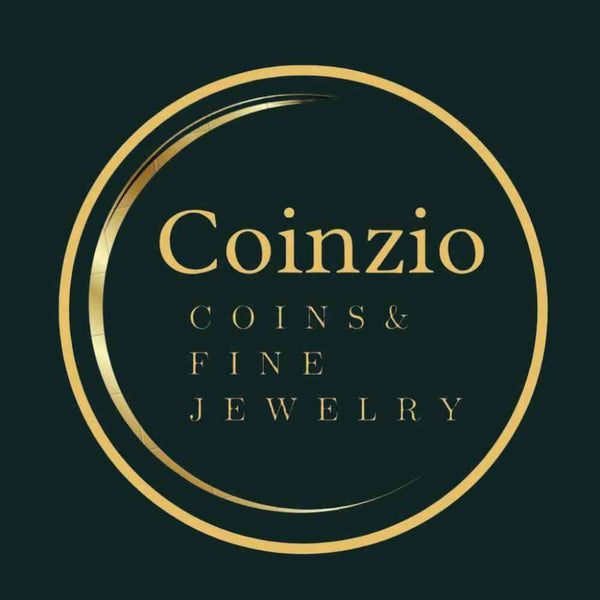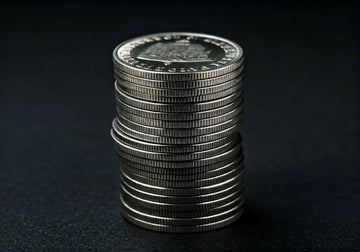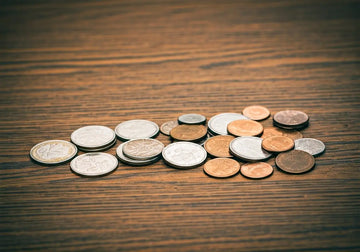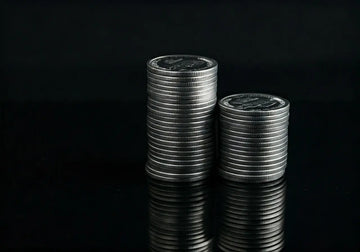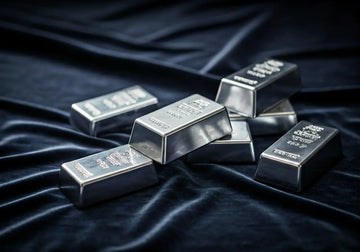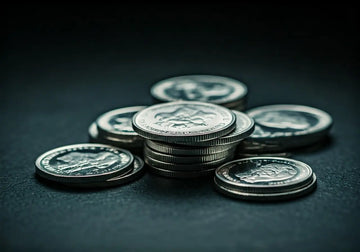Platinum coins often intrigue collectors and investors alike due to their unique qualities and perceived value. In this blog, we’ll delve into what makes platinum coins special and why they hold significant worth in the market.
What Are Platinum Coins?
Platinum coins are coins made from platinum, a silvery-white metal known for its rarity and durability. These coins are issued by mints around the world and often feature unique designs.
Platinum is one of the rarest materials known to man. Like silver and gold, it is considered a precious metal, but it’s even rarer than its counterparts. This rarity makes each platinum coin particularly special, as they aren’t just currency—they’re a type of artwork too. Exceptionally resistant to tarnishing, platinum coins maintain their shininess and allure over time, preserving their value both as collectibles and investments.
The process of creating platinum coins involves several intricate steps. Platinum must be extracted and refined to a high level of purity before it can be molded and minted into coins. Given the complexity and cost of this process, platinum coins are typically produced in smaller quantities than gold and silver coins. Their limited minting adds to their collectible status and underscores their appeal to enthusiasts and investors alike.
History of Platinum Coins
Although relatively newer to the scene than gold or silver coins, platinum coins have a rich history, gaining popularity especially in the 20th century. They are minted in limited quantities, which adds to their allure.
The story of platinum coins begins in the modern era, more precisely during the 20th century when they emerged as a limited mintage option for collectors. For example, the 1970s saw the introduction of the first platinum bullion coins in Tonga, before other famous mints like the Royal Canadian Mint followed suit with creations like the Platinum Maple Leaf in the 1980s. Since then, various mints have introduced platinum coins, each with their artistic designs and historical significance at play.
Why Are Platinum Coins Valuable?
The value of platinum coins comes from their scarcity, the intrinsic value of platinum as a metal, and their status as legal tender in many countries. Moreover, platinum’s use in industrial applications contributes to its high demand.
Platinum’s value isn’t merely surface level; it holds much deeper significance in the industrial sector. Known for its catalytic properties, platinum is vital in the automotive industry, particularly in catalytic converters which reduce car emissions. This demand not only props up its market value but also reflects on the price of platinum coins, underscoring their allure as a multifaceted investment.
Beyond industrial demand, collectors prize platinum coins for their exquisite craftsmanship and the prestige that comes with owning something rare. Major mints like the United States Mint produce limited issues of platinum coins, such as the Platinum Eagle, which are sought after by numismatists not only for their metal content but also for their artistry and limited availability.
Investment Potential of Platinum Coins
Platinum coins are considered a stable investment due to platinum’s market value. Investors favor these coins not only for their portfolio diversification options but also for their potential financial security.
Investing in platinum coins offers unique benefits. Given the volatility of the stock market, having alternative assets like precious metals can provide a buffer against economic instability. Platinum is seen as a hedge against inflation and currency fluctuations. When traditional markets falter, the scarcity and industrial demand for platinum can sustain its value, serving as a reliable store of wealth.
Moreover, platinum coins can complement investments in other metals like gold and silver. This strategy can be advantageous, as different metals may react differently to market movements. By including platinum in a diversified portfolio, investors can potentially enjoy more balanced returns, thanks to its unique position in the commodity market landscape. Consider exploring strategic investments involving platinum to benefit from its rarity and industrial backbone.
Collecting Platinum Coins
Aside from their investment value, platinum coins are also prized by collectors. Their limited mintage and artistic designs make them highly sought after by numismatists.
Starting a collection of platinum coins can be an exciting journey into numismatics. Each coin tells a story, reflecting a piece of the historical narrative from when it was minted. Collectors often start with accessible options like the Canadian Platinum Maple Leaf or the American Platinum Eagle due to their widespread recognition and availability. These coins frequently feature intricate designs commemorating national symbols and historical events.
For new collectors, it’s important to purchase from reputable dealers. Understanding the market, recognizing authenticity, and appreciating the aesthetic value of coins are essential skills, enhancing both the joy of collection and ensuring sound financial decisions. Whether you’re in it for the love of the art or the thrill of the hunt, collecting platinum coins offers rich rewards in knowledge and ownership.
Engaging with communities and forums can also enhance the collecting experience. Sharing insights, discussing trends, and trading coins within numismatic circles can deepen your understanding and appreciation of platinum coins. Whether you’re a seasoned collector or someone who’s just beginning to explore this fascinating hobby, there’s a wealth of adventures awaiting in the world of platinum coins.
Understanding the Value of Platinum Coins
Platinum coins stand out not just for their aesthetic appeal but also for their rarity, investment benefits, and the robust demand in various markets. Whether you’re a collector or an investor, understanding the value of platinum coins can enhance your appreciation and strategy in acquiring them.
